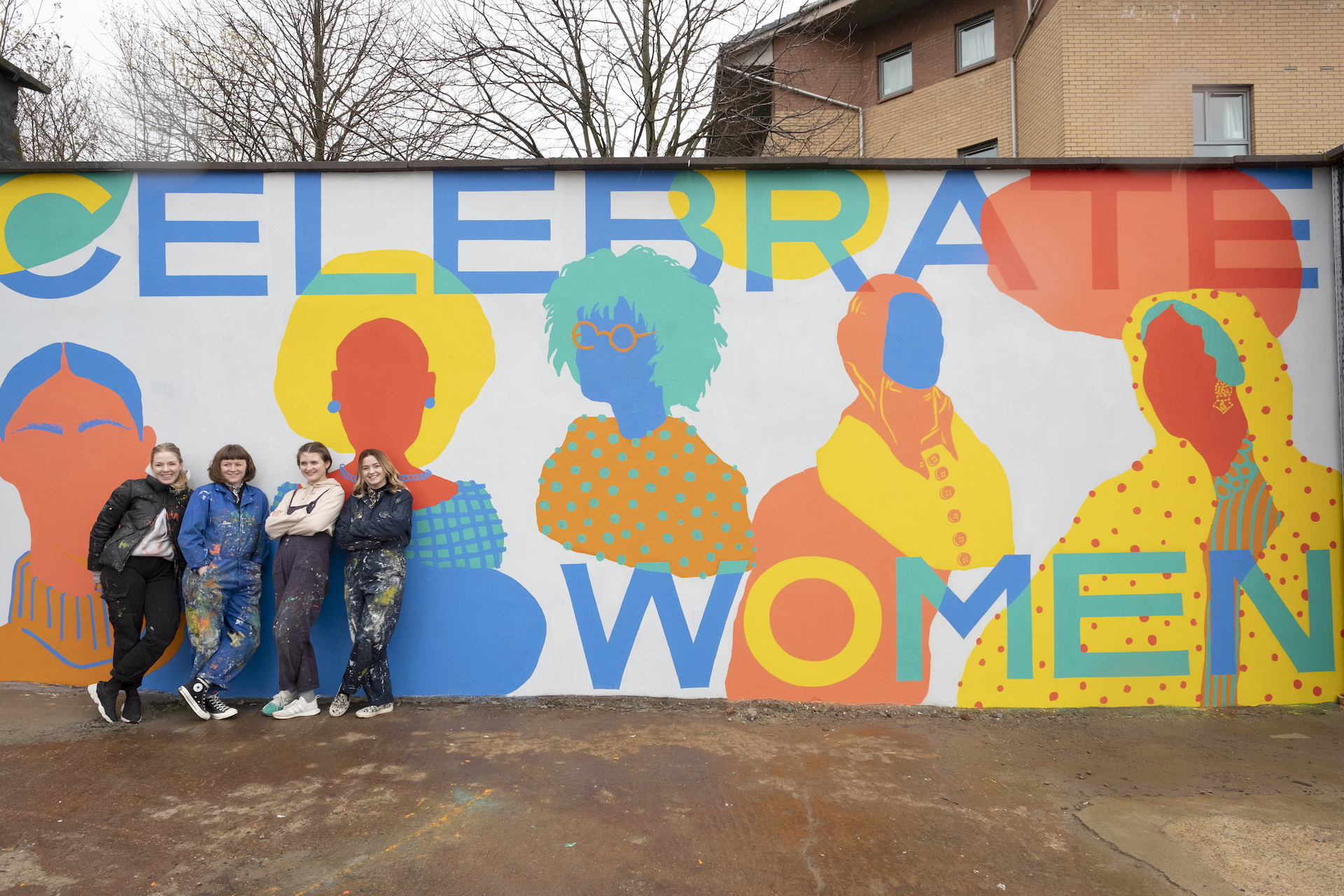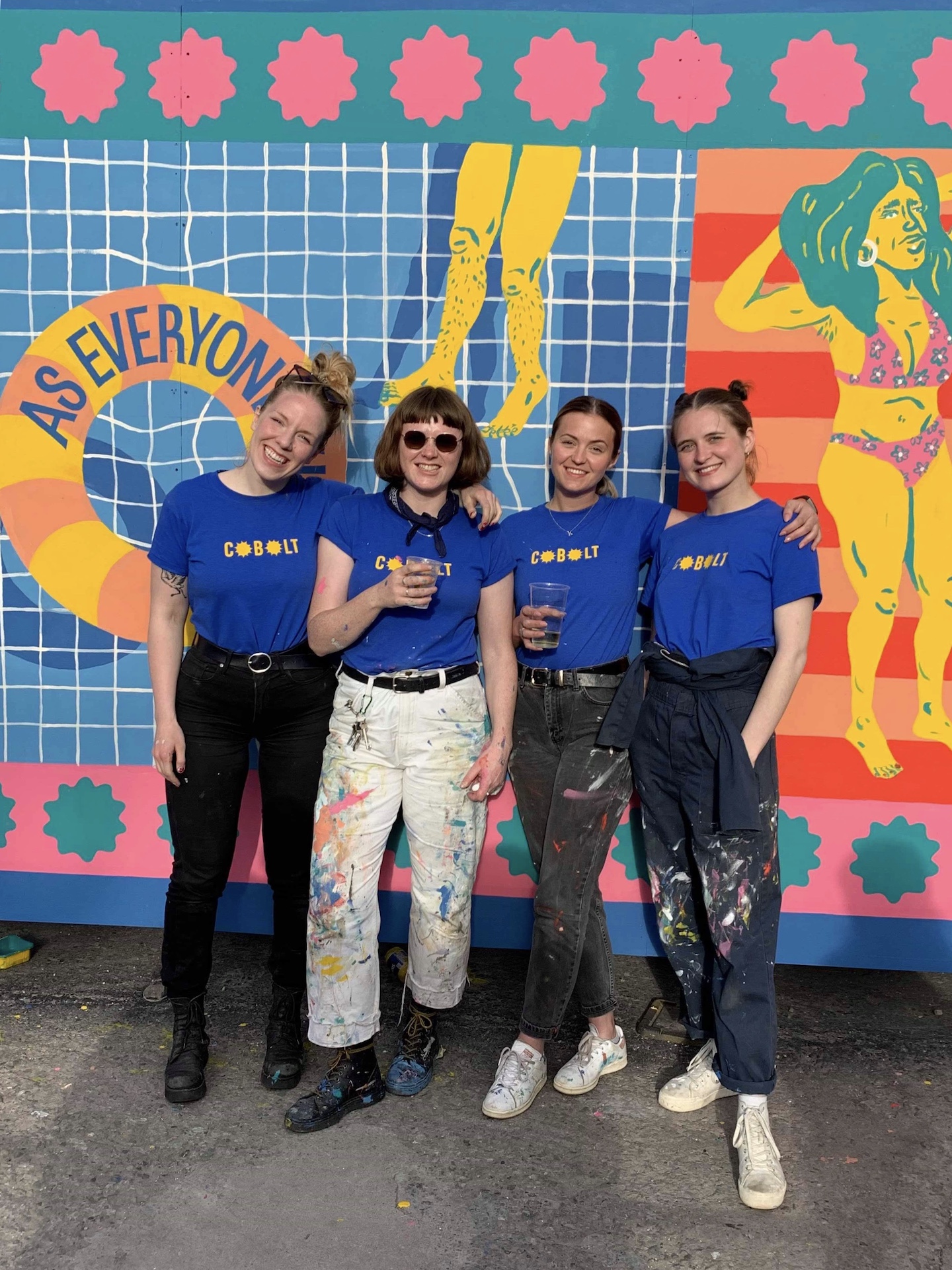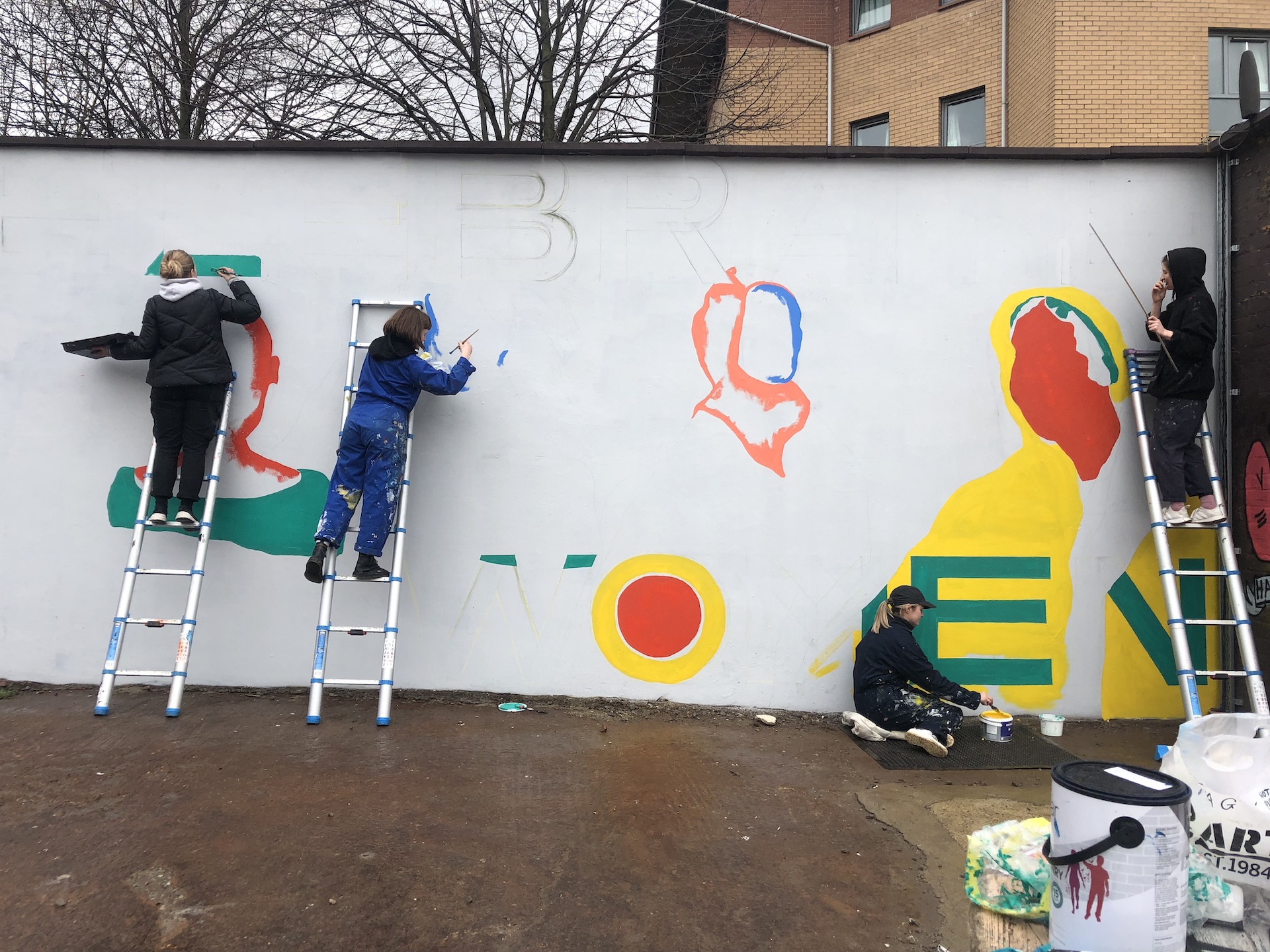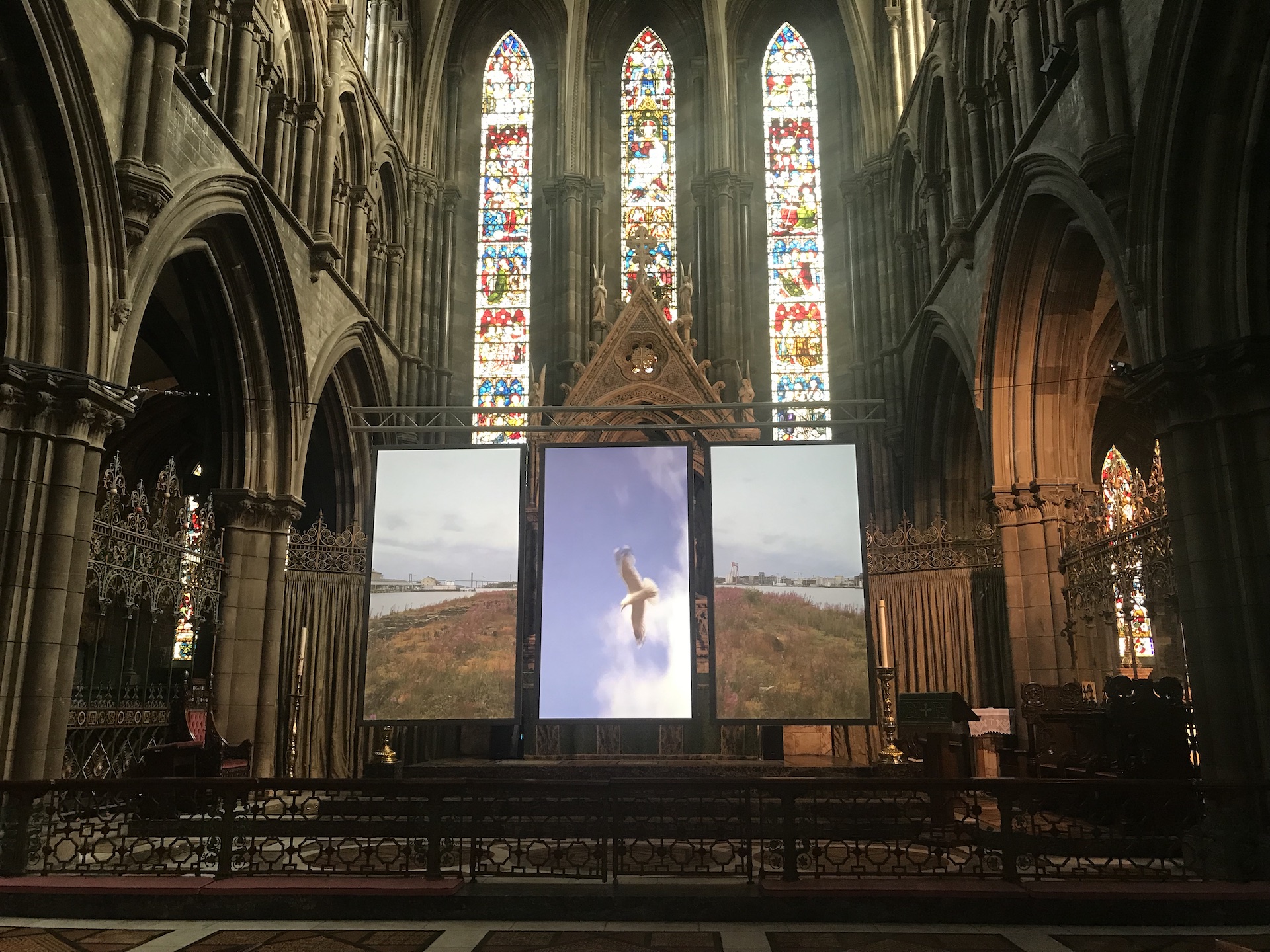
A table or a hand: on the progressive hospitality within Snæbjörnsdóttir/Wilson’s Vanishing Point: where species meet

A table or a hand: on the progressive hospitality within Snæbjörnsdóttir/Wilson’s Vanishing Point: where species meet
A wooden bespoke table grounds itself by the River Gota. A seabird soars above it, and clouds are scattered across the otherwise blue sky. These early views of Snæbjörnsdóttir/Wilson’s Vanishing Point: where species meet act not only as an introduction, but an invitation; a gesture of welcome into their performance. Originally commissioned for the 2011 Gothenburg Biennial curated by Sarat Maharaj, this three-channel video is currently suspended above the altar in Edinburgh’s iconic St Mary’s Cathedral as part of the 2019 Edinburgh Art Festival.
I entered St Mary’s in the middle of a heatwave and immediately sought refuge in a seat at the front pew. I fell into the serenity and silence of the space, and basked in the cool shade as I witnessed the meal unfold. Pieces of bread were tossed from one end of the table towards the circular divot in the other, prompting the seagulls to flock towards their appetizer. A generous pat of butter slowly melts in a hot skillet, and a piece of fish is dropped in and it sizzles. In the Cathedral, the strong sun shines through three enormous stained glass windows at the top of the alter, echoing the three screens in front of them which hold Snæbjörnsdóttir/Wilson’s work in a way that proves that it’s resting in its rightful (albeit, temporary) home. I cannot help but associate this alternative rule of thirds that rings so prominently throughout my time with this piece and in this place: the video screens mimicking the stained glass (or vice-versa), the Holy Trinity, breakfast, lunch and dinner, a three course meal – I could go on.
The title, Vanishing Point, stresses the importance of the action itself over the location of it. Though this work was originally made as a site-specific piece, filmed on the roof of Roda Sten (the main Biennial building in Gothenburg), I believe the heart of this work exists in the convergence between species, and emphasises the importance of the willingness to share, and of unconditional and unwavering hospitality. In light of the current political climate in the UK (and globally, for that matter), this reminder of unity could not (re)surface at a better time. Sitting with this piece a bit longer, I fall into a trance of the birds calling one another, which within this sacred setting, feels like nature’s orchestra. They ring through the Cathedral in a similar way that the organ would draw the congregation in for Sunday morning service. My eyes are glued to the screens, and I find myself creeping up closer and closer to get a better view. There’s something so curious that happens with my perception of scale as I’m drawn in. The large screens suddenly feel slightly small only in comparison to the grandeur of the space that’s hosting them, but the images on the screen – the sky, the sea – span much larger than any architectural masterpiece ever could. My concentration was broken for a moment by a tourist who clearly missed the (vanishing) point of having this work installed within this context, as they exclaimed to their partner that the work was ruining the ambiance of the Cathedral and walked off. Their comment in turn broke the solemnity of the crowd viewing the piece. I shared a small smirk in solidarity with another visitor, and we went back to watching the morsels of bread fly across the screens.
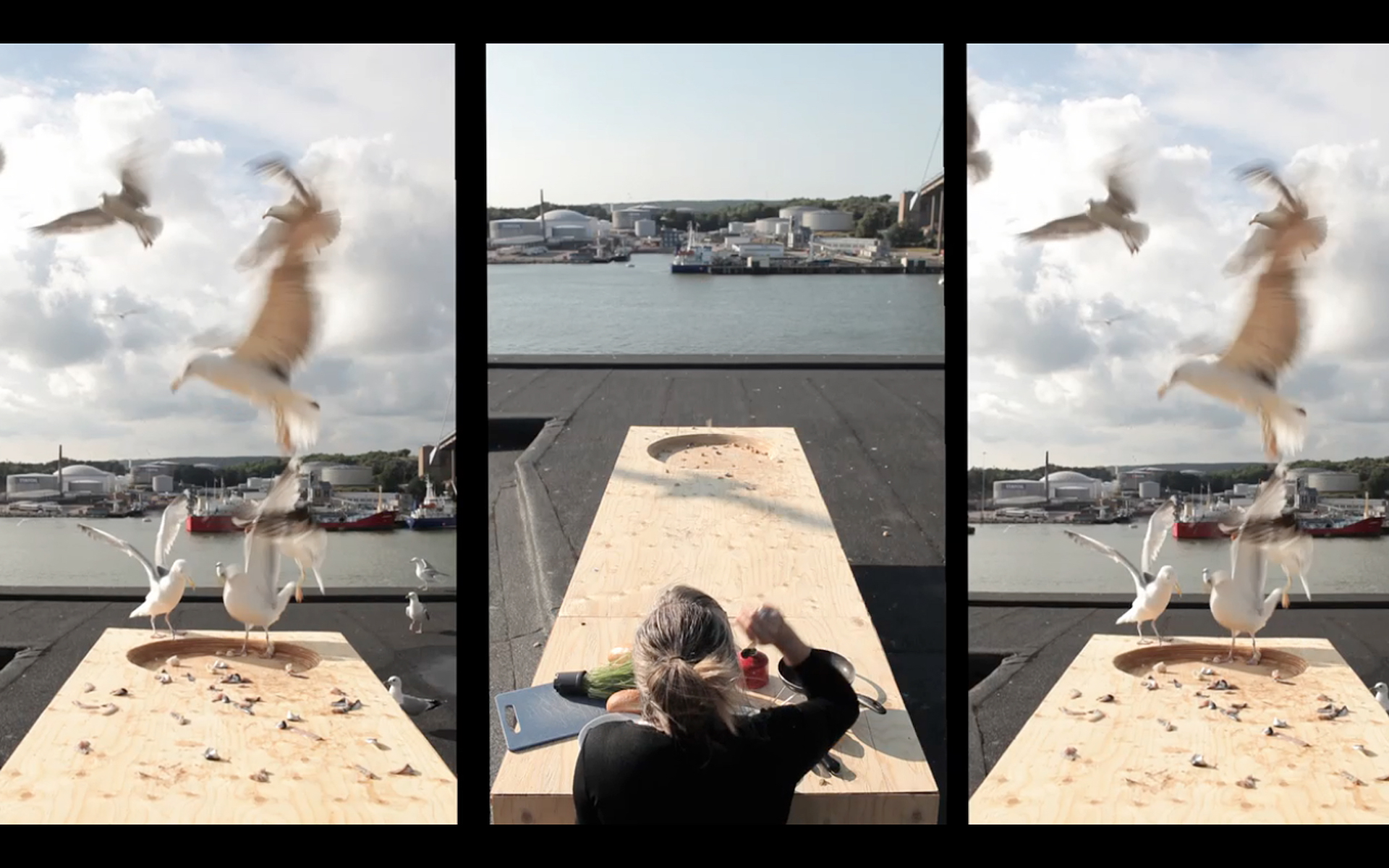
The video continues, and my eyes remain fixated on this table. More so than any other piece of domestic furniture, I understand a table to have the function of hosting. A table is where we know to gather; it’s a meeting place. This basic form exists in many iterations and serves various functions within these roles, but inevitably, its purpose is to hold and support simultaneously. There even exists a strong presence of tables throughout art history – from Erwin Wurm’s altered furniture sculptures, to Robert Therrien’s Under the Table (1994)[1], to being a support or background within countless still life paintings, to being the central gathering place in DaVinci’s infamous The Last Supper (1495-96), which particularly resonates with Snæbjönsdottir/Wilson’s piece in this current installation. Most prominent in my mind, however, is Allora & Calzadilla’s Under Discussion (2005), in which we witness Calzadilla perform some sort of erratic act of engineering by upturning a table, attaching a motor, and turning it into a boat. The video captures this makeshift boat being used to survey the area of Vieques, which is an island-municipality of Puerto Rico that the US Navy had occupied and used as a bomb-testing site for over sixty years. This action offers a place to have a conversation that is often only ever had behind closed doors, prompting questions of information and access[2]. The table acts as a silent but active participant within this radical socio-political statement, which is similar to how I perceive the role of the table in Vanishing Point. Snæbjörnsdóttir/Wilson’s construction is situated in a way that gestures an open invitation, it’s nearly anthropomorphic in its way of being – acting much like a hand reaching out to greet or assist us. This wooden table was undoubtedly built with intention, with a “bowl” of sorts carved out of one end to hold and serve the meal to Snæbjörnsdóttir/Wilson’s winged guests. The intimate structure of a table enables the actions of gathering and support, and the proximity that we often allow them to have between ourselves, our actions, and others is perhaps why it seems to be the most hospitable piece of domestic furniture. Céline Condorelli speaks of her perception of intimacy garnered through proximity in an particularly resonant way within Support Structures, as she sheds light on the “violence” of support: that how being supportive implies more than mere contact, but furthermore being right up against the subject of concern. She states that to work in support means to emphasise the need for it.[3] Perhaps the table acts as more than just a literal support structure in this setting.

As I take in the piece in its entirety, I begin to see it very much as a daisy chain of shifting hospitality. Snæbjörnsdóttir/Wilson are preparing the meal, but are fundamentally guests or visitors in the environment of the seabirds, but the seabirds nevertheless accept the invitation to break bread within their natural space. That said, perhaps the seabirds were also considered (unwelcomed) guests within Roda Sten, where they are notorious for brazenly joining in on visitors’ meals at the waterfront al fresco cafés in the area. In the exhibition catalogue for FEAST: Radical Hospitality in Contemporary Art, Jan Verwoert’s contributing essay[4] speaks of “the artist’s guest”. Perhaps this is referring predominantly to visitors in a gallery, but this particular work sheds a new light on this when considering host and guest dynamics within Vanishing Point. Within this particular installation, where they have been graciously invited by the Provost of St Mary’s to exhibit this work in the Cathedral, the invitation alone carries strong connotations of hospitality in and of itself; they’re guests in these spaces, but hosts through their objects and actions. Verwoert also speaks about the labour of constant care, as well as the invisible labour of the host.[5] Conventional notions of hospitality lead me to consider if hosting in general is a performance. If so, is the table merely a prop? And are guests the performers? Upon reflecting on Verwoert’s words, I came to realise that Vanishing Point is not solely about hospitality, but more so community, as the labour was never hidden.
The work comes to a close by placing the viewers in the perspective of being seated at the table to share in the meal as guests. The politics of equality and inclusion are truly challenged in this piece as it breaks down the preconceived differences between species, and highlights something that we all fundamentally need at our cores. It’s a reminder that everything and everyone requires nourishment to survive whether we seek it ourselves or its offered to us. Perhaps upon first look, some may find it strange to host a meal for seabirds, but how is it fundamentally that different from a conventional dinner party? We are all simultaneously hosts and guests to this Earth, and Vanishing Point instills in me that we are all connected – as much as humanity has often chosen to believe otherwise. I’m also reminded of the urgency of sharing rather than taking. With this meal, Snæbjörnsdóttir/Wilson choose to build bridges instead of walls – breaking down barriers and proving that generosity truly can be unconditional.
Juliane Foronda
[1] A similar, and often mistaken work of Therrien’s Under the Table is No Title (Table and Four Chairs), 2003
[2] “Under Discussion.” DMA Collection Online, collections.dma.org/artwork/5329404.
[3] “Directions for Use (Features: Proximity).” Support Structures, by Condorelli Céline et al., Sternberg Press, 2014, p. 15.
[4] Verwoert, Jan. “The Anti-Angelic Host: Reading the Politics of Hosting Culture Through the Writing of Virginia Woolf.” Feast. Radical Hospitality in Contemporary Art, David & Alfred Smart Museum, 2013, pp. 360–366.
[5] Verwoert, Jan. “The Anti-Angelic Host: Reading the Politics of Hosting Culture Through the Writing of Virginia Woolf.” Feast. Radical Hospitality in Contemporary Art, David & Alfred Smart Museum, 2013, pp. 360–361.
Vanishing Point: where species meet continues through 25 August as part of the 2019 Edinburgh Art Festival. Please note that St Mary’s Cathedral is an active place of worship and this means that at times the sound component of Vanishing point may temporarily be muted. A reception featuring an artists’ talk and discussion event will take place at St Mary’s Cathedral from 4:00-6:00 pm on Saturday 10th August, 2019 and all are welcome.
For the last twenty years, artists Snæbjörnsdóttir/Wilson, have been practicing and producing in the field of contemporary art on an international stage, with projects and exhibitions in the UK, Europe, Australia, and the USA. Through their work they ask what it means in the context of crisis, (e.g. mass extinction and the Anthropocene), to consider and practice art as a tool of disruption and mediation, how the semblance of passivity might subversively be channeled as an instrument of change and how complex, cross-disciplinary relationships can effectively and otherwise, be managed.
Bryndís Snæbjörnsdóttir (PhD) is Professor and MA programme director at the Iceland University of the Arts, and Mark Wilson (PhD) is Professor in Fine Art and Course leader in MA Contemporary Fine Art at the University of Cumbria, Institute of the Arts, UK. They live and work in Iceland and the UK.
https://snaebjornsdottirwilson.com/
Photo credits: Bryndís Snæbjörnsdóttir/Mark Wilson.

